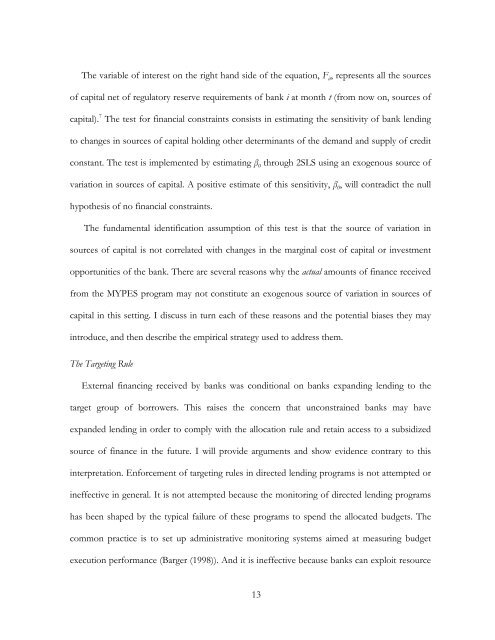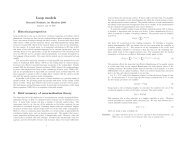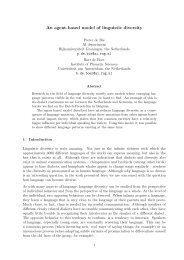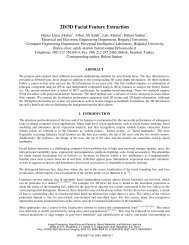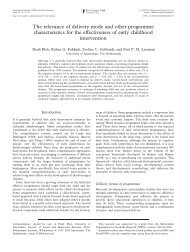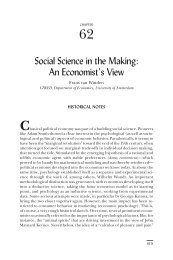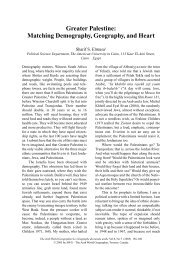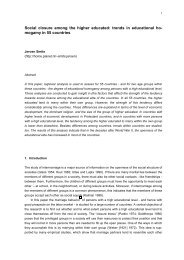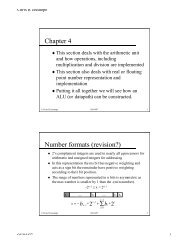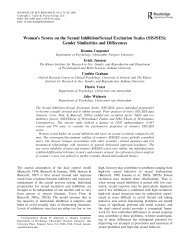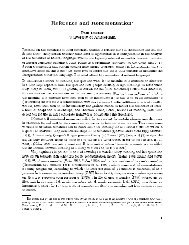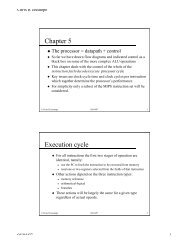Local Bank Financial Constraints and Firm Access to External Finance
Local Bank Financial Constraints and Firm Access to External Finance
Local Bank Financial Constraints and Firm Access to External Finance
Create successful ePaper yourself
Turn your PDF publications into a flip-book with our unique Google optimized e-Paper software.
The variable of interest on the right h<strong>and</strong> side of the equation, F it , represents all the sourcesof capital net of regula<strong>to</strong>ry reserve requirements of bank i at month t (from now on, sources ofcapital). 7 The test for financial constraints consists in estimating the sensitivity of bank lending<strong>to</strong> changes in sources of capital holding other determinants of the dem<strong>and</strong> <strong>and</strong> supply of creditconstant. The test is implemented by estimating β 0 through 2SLS using an exogenous source ofvariation in sources of capital. A positive estimate of this sensitivity, β 0 , will contradict the nullhypothesis of no financial constraints.The fundamental identification assumption of this test is that the source of variation insources of capital is not correlated with changes in the marginal cost of capital or investmen<strong>to</strong>pportunities of the bank. There are several reasons why the actual amounts of finance receivedfrom the MYPES program may not constitute an exogenous source of variation in sources ofcapital in this setting. I discuss in turn each of these reasons <strong>and</strong> the potential biases they mayintroduce, <strong>and</strong> then describe the empirical strategy used <strong>to</strong> address them.The Targeting Rule<strong>External</strong> financing received by banks was conditional on banks exp<strong>and</strong>ing lending <strong>to</strong> thetarget group of borrowers. This raises the concern that unconstrained banks may haveexp<strong>and</strong>ed lending in order <strong>to</strong> comply with the allocation rule <strong>and</strong> retain access <strong>to</strong> a subsidizedsource of finance in the future. I will provide arguments <strong>and</strong> show evidence contrary <strong>to</strong> thisinterpretation. Enforcement of targeting rules in directed lending programs is not attempted orineffective in general. It is not attempted because the moni<strong>to</strong>ring of directed lending programshas been shaped by the typical failure of these programs <strong>to</strong> spend the allocated budgets. Thecommon practice is <strong>to</strong> set up administrative moni<strong>to</strong>ring systems aimed at measuring budgetexecution performance (Barger (1998)). And it is ineffective because banks can exploit resource13


